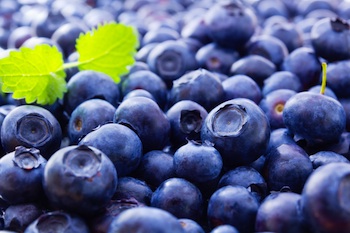Uruguay’s blueberry volumes to shoot up in 2014
With Uruguay’s blueberry season getting underway, industry estimates put total anticipated volumes far higher than the last campaign, even though less land is in production.
Favorable climatic conditions over recent months mean about 2,500 metric tons (MT) of blueberries are expected to be produced from the country’s 486 hectares.
Uruguayan Fruit Producers and Exporters Union (UPEFRUY) representative Marta Bentancur told www.freshfruitportal.com last season’s production took a tumble as the industry was ill-equipped to deal with the poor weather.
“Last year around about 1,700MT were exported, which was lower than originally estimated because we experienced some adverse weather,” she said.
“There was a lot of rain throughout the harvest and some companies just didn’t have the manpower to harvest the fruit under those conditions.
“This year’s blueberry season started on August 14 with fairly small volumes. October is a relatively slow month, followed by the peak in November and then it starts to die down in December. When Chile enters the international market we’ve practically finished our campaign.”
Bentancur said very little fruit was supplied to the domestic market, and essentially all the fruit was produced with exports in mind, adding that Europe received 60% of shipments with almost the entire remainder sent to the U.S.
“There were tiny amounts we exported to Hong Kong and Canada, but it is basically a 40-60% split between the U.S. and EU. That figure has actually changed over the last few years – it used to be the other way around, with the U.S. receiving 60%,” she explained.
The industry is currently working to open up new international markets, with a particular focus on China. Officials from the Asian country are due to visit Uruguay this month to negotiate phytosanitary protocols.
Increasing foreign investment
For some time the number of blueberry-growing hectares in Uruguay has been slow decreasing, along with the amount of producers.
Bentancur explained there were now fewer producers because of the country’s blueberry boom, which led to foreign investors becoming involved with the crop and buying out smaller companies.
“Investment was made in small isolated areas, which is where the packing plants are that handle the big export volumes. So because of that the smaller producers have disappeared,” she said.
“Another reason is because in the south of the country some varieties were planted that weren’t very competitive – ones that are produced when Chile’s export season is fully underway. So the prices were far lower than fruit grown in the north of the country – places like Santo and Paysandú.
“In the north the season starts around August or September and in the first 15 days of October there is a good exportable production, while in the south when production starts in November the international prices are much lower.”
10/10/2014
Fresh Fruit Portal






